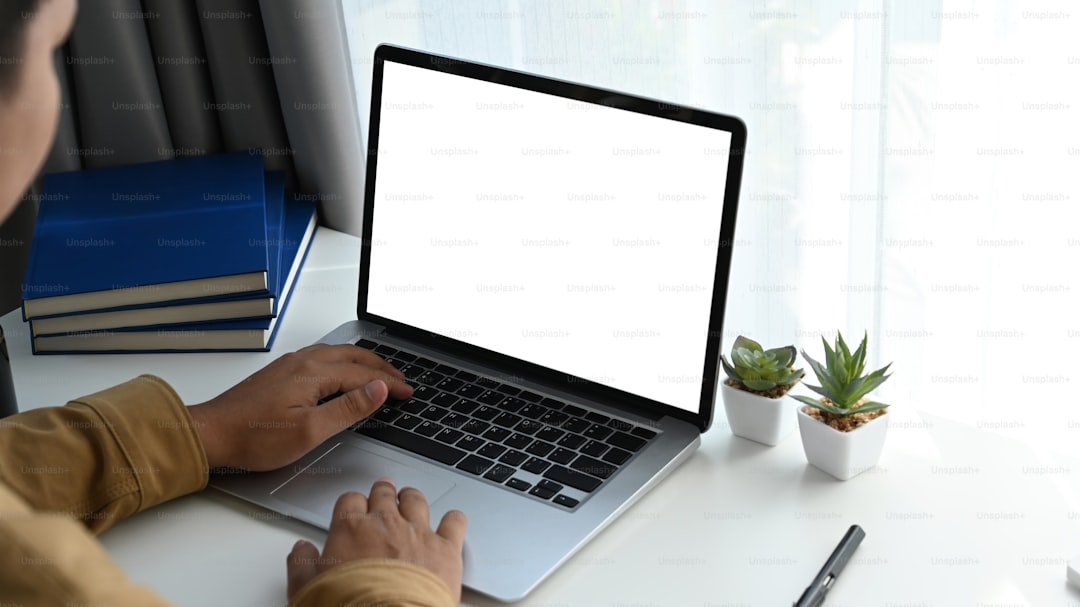Mastering Remote Work with Essential Tools and Focused Productivity Habits

Introduction
Remote work has moved from a niche perk to a mainstream way of doing business. Companies across every industry now rely on distributed teams to innovate, serve customers and stay competitive. For the individual worker, the shift brings freedom and flexibility, but it also introduces new challenges. Without the structure of a traditional office, it is easy to lose focus, miss deadlines or feel isolated.
The key to thriving in a remote environment is a blend of two things: the right technology stack and disciplined productivity habits. The tools you choose should simplify communication, streamline collaboration and protect data, while your habits should shape the way you allocate attention, manage energy and sustain motivation. This article explores the essential tools every remote professional should master and the focused habits that turn those tools into a high‑performing remote work system.
The Remote Work Landscape
Before diving into tools and habits, it helps to understand the forces shaping remote work today.
- Geographic dispersion – Teams are no longer bound by city limits. Time zones, cultural differences and language nuances are part of daily life.
- Hybrid models – Many organizations combine office days with remote days, requiring fluid transitions between environments.
- Technology acceleration – Cloud services, AI‑driven assistants and low‑latency video have reduced the friction of distance.
- Employee expectations – Workers now demand flexibility, work‑life balance and autonomy, which pushes companies to provide supportive infrastructure.
These trends create a landscape where productivity hinges on two pillars: the digital ecosystem you build and the personal routines you maintain. Ignoring either pillar leaves you vulnerable to burnout, missed deadlines and communication breakdowns.
Essential Tools for Remote Success
A well‑curated toolkit eliminates friction, safeguards information and keeps teams aligned. Below are the core categories of tools and specific recommendations that have proven effective for remote professionals.
Communication
Clear, timely communication is the lifeblood of remote teams. The right platform should support instant messaging, voice calls, video conferencing and threaded discussions.
- Instant messaging – Slack, Microsoft Teams and Discord provide channel‑based organization, searchable archives and integrations with other apps.
- Video conferencing – Zoom, Google Meet and Cisco Webex deliver reliable screen sharing, breakout rooms and recording capabilities.
- Asynchronous voice – Platforms like Loom and Vidyard let you record short video messages that can be watched on the recipient’s schedule, reducing meeting overload.
When choosing a communication suite, prioritize ease of onboarding, mobile app quality and the ability to integrate with your project management and file‑sharing tools.
Collaboration
Collaboration tools turn individual effort into collective output. They should enable real‑time editing, version control and transparent feedback loops.
- Document editing – Google Workspace (Docs, Sheets, Slides) and Microsoft 365 (Word, Excel, PowerPoint) allow simultaneous editing, comment threads and granular permission settings.
- Whiteboarding – Miro, Mural and FigJam support visual brainstorming, flowcharting and design mockups across time zones.
- Design & Prototyping – Figma and Adobe XD provide cloud‑based design environments where multiple designers can edit a file at once.
A key habit is to create a shared folder structure or workspace for each project, ensuring that every collaborator knows where to find the latest version of a file.
Project Management
Remote teams need a transparent way to track work, assign responsibilities and visualize progress.
- Task boards – Trello, Asana and ClickUp let you create Kanban boards, set due dates and attach files.
- Roadmapping – Aha! and Productboard help product teams define strategic initiatives and link them to execution tasks.
- Agile sprint tools – Jira and Clubhouse (now Shortcut) provide backlog grooming, sprint planning and burndown charts for software teams.
Select a platform that matches your workflow. If you prefer a lightweight visual board, Trello may suffice. For complex, multi‑team initiatives, a more robust system like Jira could be necessary.
Time Tracking & Accountability
Knowing how time is spent supports better planning and billing (when needed). It also creates a sense of accountability without micromanagement.
- Simple timers – Toggl Track and Clockify let you start and stop timers with a single click, then generate reports.
- Integrated tracking – Harvest and Hubstaff embed time tracking directly into project management tools, linking hours to tasks automatically.
Combine time tracking with a habit of daily reflection to identify patterns, adjust estimates and protect focus blocks.
Cloud Storage & File Management
A single source of truth for files prevents version confusion and data loss.
- General storage – Google Drive, OneDrive and Dropbox offer sync clients, shared drives and granular sharing permissions.
- Large‑file handling – Box and Egnyte specialize in handling large media assets and provide advanced security controls.
Implement a naming convention and folder hierarchy that reflects project phases, client names or product lines. This reduces the time spent searching for documents.
Security & Privacy
Remote work expands the attack surface. Security tools protect both personal devices and corporate data.
- VPN – NordLayer, Perimeter 81 and OpenVPN provide encrypted connections when accessing corporate resources from public Wi‑Fi.
- Password managers – 1Password, LastPass and Bitwarden store credentials securely and generate strong passwords on demand.
- Endpoint protection – Malwarebytes, CrowdStrike and Windows Defender keep laptops safe from ransomware and phishing attacks.
Make security a habit: lock your screen when stepping away, enable two‑factor authentication and keep software updated.
Automation & Integration
Automation eliminates repetitive steps, freeing mental bandwidth for high‑value work.
- Workflow automation – Zapier, Make (formerly Integromat) and Microsoft Power Automate connect apps and trigger actions based on events.
- Scripting – For tech‑savvy users, Python scripts or Bash aliases can batch‑rename files, pull reports or clean up email inboxes.
Identify at least one recurring manual process each week and explore how an automation tool can handle it.
Focused Productivity Habits
Tools are only as effective as the habits that drive them. Below are proven habits that sharpen focus, sustain energy and cultivate a high‑performing remote mindset.
Set a Consistent Routine
A predictable start and end to the workday signals to your brain when it is time to focus and when it can relax.
- Morning ritual – Begin with a brief activity that signals “work mode”: a coffee, a short walk, a meditation or a review of the day’s priorities.
- Defined finish – Log off at the same time each day, shut down work‑related apps and transition to personal time.
Consistency reduces decision fatigue and makes it easier to enter deep work states.
Design a Dedicated Workspace
Physical separation of work and leisure helps the brain associate the environment with productivity.
- Ergonomic setup – Invest in an adjustable chair, a monitor at eye level and a keyboard that supports a neutral wrist position.
- Minimize visual clutter – Keep only the items you need for the day on your desk; store other supplies out of sight.
- Signal to others – If you share a home, use a “do not disturb” sign or a closed door during focus blocks.
A well‑designed workspace reduces distractions and supports sustained concentration.
Manage Distractions Proactively
Remote work introduces unique interruptions: household chores, pets, social media and family members.
- Digital buffers – Use website blockers (Freedom, Cold Turkey) during focus periods to prevent tab hopping.
- Notification hygiene – Turn off non‑essential notifications on phone and desktop; reserve a specific time to check email.
- Physical cues – Place a “focus” indicator on your desk that signals to others you are in a concentration window.
By controlling the environment, you reclaim the attention that would otherwise be fragmented.
Prioritize Tasks with the “Big‑Three”
Each day, identify the three most important outcomes you need to achieve.
- Select outcomes, not tasks – Focus on results (e.g., “draft client proposal”) rather than activities (“open Word”).
- Tackle the hardest first – Completing the most challenging item early builds momentum and reduces anxiety.
- Review at day’s end – Check off completed items and carry over any unfinished ones to the next day’s list.
This habit keeps effort aligned with strategic goals and prevents the endless “busy work” trap.
Use Time Blocking
Allocate fixed blocks of calendar time for specific types of work.
- Deep work blocks – Reserve 90‑minute intervals for tasks that require uninterrupted concentration, such as coding, writing or data analysis.
- Collaboration windows – Schedule periods for meetings, pair programming or brainstorming to keep them contained.
- Buffer zones – Include short transition periods between blocks to handle emails, stretch or reset focus.
Time blocking visualizes how your day is spent and protects high‑value activities from being overtaken by meetings.
Apply the Pomodoro Technique
Break work into short, timed intervals followed by brief rests.
- 25‑minute focus bursts – Work with single‑task intensity, then stop when the timer rings.
- 5‑minute breaks – Stand, stretch, hydrate or glance away from the screen.
- Longer rest after four cycles – Take a 15‑20‑minute break to recharge fully.
The regular rhythm prevents mental fatigue and trains the brain to enter flow quickly.
Take Strategic Breaks
Breaks are not idle time; they are essential for cognitive restoration.
- Movement – Walk around the room, do a few stretches or practice a quick yoga flow.
- Nature exposure – If possible, step outside for fresh air and natural light; this improves mood and alertness.
- Micro‑meditation – Close your eyes, breathe deeply for one minute, and release tension.
Schedule breaks intentionally rather than waiting for exhaustion to force a pause.
Maintain Physical Health
Your body fuels your mind. Remote workers often neglect movement and posture.
- Daily exercise – Aim for at least 30 minutes of moderate activity, such as a brisk walk, cycling or bodyweight workout.
- Hydration – Keep a water bottle at your desk and sip regularly; dehydration impairs concentration.
- Nutrition – Choose balanced meals with protein, complex carbs and healthy fats to sustain energy levels.
Physical wellbeing directly influences focus, creativity and resilience.
Nurture Mental Wellbeing
Isolation can erode motivation and increase stress.
- Social connection – Schedule virtual coffee chats, join online communities or attend industry webinars.
- Mindfulness practice – Spend 5‑10 minutes daily on meditation, breathing exercises or gratitude journaling.
- Boundary setting – Communicate availability limits to teammates and family, protecting personal time.
A healthy mindset amplifies the effectiveness of all other productivity habits.
Continuous Learning & Skill Refresh
Remote work evolves rapidly; staying current keeps you competitive.
- Micro‑learning – Spend 10 minutes each day reading an article, watching a tutorial or listening to a podcast.
- Skill sprints – Dedicate a weekly block to deep dive into a new tool or methodology relevant to your role.
- Feedback loops – Request regular input from peers or managers and act on constructive suggestions.
Learning becomes a habit when integrated into your routine rather than treated as an occasional task.
Integrating Tools with Habits
The real power emerges when tools reinforce habits and habits make tools more effective. Below are practical ways to combine the two.
- Automated status updates – Use a Slack integration that posts a daily “big‑three” summary from your task board each morning. This habit of public commitment boosts accountability.
- Time‑tracking triggers – Set Toggl to start a timer automatically when you open a specific project folder. The habit of tracking becomes seamless, providing data for future planning.
- Focus‑mode scripts – Create a simple script that disables non‑essential notifications, dims the screen and launches a Pomodoro timer when you enter a deep‑work time block. The tool enforces the habit without manual effort.
- Meeting‑free days – Block a calendar day for “no meetings” and configure your video‑conference app to auto‑reject invitations for that day. The habit of protecting a full day for deep work is supported by the technology.
- End‑of‑day wrap‑up template – Use a shared Google Doc with a checklist (review tasks, update project board, log hours, plan tomorrow). Fill it out at the same time each evening to cement the habit of closing the day with clarity.
By embedding habit cues into the tools you already use, you reduce the mental load required to maintain discipline.
Common Pitfalls and How to Avoid Them
Even with the best tools and habits, remote workers can fall into traps that erode productivity.
- Over‑meeting – Too many video calls fragment the day. Counteract by instituting meeting‑free blocks, requiring agendas and limiting meetings to 30 minutes whenever possible.
- Tool overload – Using dozens of apps creates context switching. Conduct a quarterly audit, retire redundant tools and consolidate functions (e.g., choose a single platform for both chat and file sharing).
- Blurred boundaries – Working odd hours leads to burnout. Set clear start and end times, communicate them to teammates, and honor them consistently.
- Neglecting breaks – Skipping rest periods reduces output quality. Schedule breaks in your calendar as you would any task, and treat them as non‑negotiable.
- Isolation fatigue – Lack of social interaction harms morale. Proactively schedule informal virtual gatherings or join coworking Discord servers to maintain a sense of community.
Awareness of these pitfalls makes it easier to implement preventive habits before they become entrenched.
Measuring Success
To know whether your remote work system is effective, track both quantitative and qualitative metrics.
- Productivity metrics – Completion rate of the daily “big‑three,” average time spent in deep‑work blocks, and variance between estimated and actual task durations.
- Collaboration health – Number of unresolved tickets, response times on communication channels, and frequency of missed deadlines.
- Wellbeing indicators – Self‑reported stress levels, sleep quality, and frequency of exercise breaks.
- Tool adoption – Percentage of team members regularly using the agreed‑upon platforms and the number of automation workflows in place.
Review these metrics weekly for short‑term adjustments and monthly for strategic refinements. Celebrate improvements to reinforce the habits that drove them.
Future Trends in Remote Work
Staying ahead of emerging trends ensures your toolkit and habits remain relevant.
- AI‑augmented assistants – Tools like Notion AI, Claude and ChatGPT are being integrated directly into project management and document platforms, automating summarization, drafting and data extraction.
- Hybrid‑first policies – Companies will increasingly design roles that blend office and remote days, requiring flexible scheduling tools and seamless handoffs between environments.
- Virtual‑office platforms – Spatial platforms such as Gather and Horizon Worlds create immersive “office” spaces that replicate watercooler conversations, supporting spontaneous collaboration.
- Advanced security models – Zero‑trust networking and identity‑centric security will become standard, demanding new authentication tools and continuous verification processes.
Adopting early versions of these technologies and adjusting habits accordingly will keep you competitive in the evolving remote landscape.
Conclusion
Mastering remote work is not a one‑time setup; it is a continuous cycle of selecting the right tools, cultivating focused habits, measuring outcomes and iterating. By building a digital ecosystem that removes friction—communication platforms that keep you connected, collaboration spaces that centralize work, project boards that visualize progress, and automation that handles the mundane—you create a foundation for high performance.
Layered on that foundation are habits that shape how you allocate attention, protect energy and maintain wellbeing. Consistent routines, dedicated workspaces, disciplined focus blocks, strategic breaks and ongoing learning transform technology from a collection of apps into a personal productivity engine.
When tools and habits work in harmony, remote work becomes not just a logistical arrangement but a strategic advantage—enabling deeper focus, greater autonomy and sustained output, no matter where you are.
Random Posts

The Complete Nomad Starter Kit Checklist and Planning Guide
Ready to hit the road? This guide gives you a step-by-step checklist and planning roadmap for a nomadic life, covering mindset, gear, documents, finances, so you launch confidently and never miss a detail.
1 month ago

Legal and Tax Strategies for Digital Nomads Paired with Essential Coverage
Learn how to pick your legal residence, structure your business for tax efficiency, and choose the right health and travel insurance so you can work from anywhere without costly surprises.
1 month ago

City Escapes for Nomads Budget Flights and Local Transit Secrets
Discover five affordable city escapes for digital nomads, learn how to snag cheap flights, and master the local transit tricks that let you live like a resident while keeping your work on track.
1 month ago

International Payment Methods Every Nomad Should Know
Discover the top international payment solutions for digital nomads, compare fees, speed, accessibility and security so you can move money worldwide without surprises and keep your cash flow smooth.
1 month ago

Smart Strategies for Finding Cozy CoLiving Spaces Globally
Discover proven tactics to locate comfortable co-living spots worldwide, from search tools to insider community tips, so you can secure a reliable, connected home base wherever you roam.
1 week ago
Latest Posts

Essential Software Every Remote Professional Should Use
Master remote work with essential tools: instant messaging like Slack, high definition video calls such as Zoom, and asynchronous voice apps. Streamline communication, stay connected and boost productivity.
1 day ago

Mastering Remote Work Productivity for Digital Nomads and Freelancers
Learn proven habits, tools, and tactics that help digital nomads and freelancers stay focused, deliver quality work, and maintain a sustainable lifestyle while traveling the world.
1 day ago

Tech‑Friendly European Towns Perfect for Remote Living
Discover Europe’s best small towns where fast internet, affordable living and vibrant tech communities let you work remotely while soaking up historic charm, lakeside views or mountain air.
1 day ago